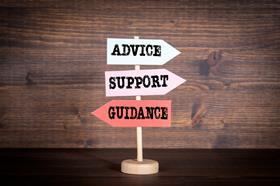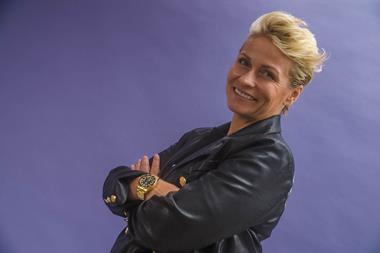Behavioural science technology could reduce uncertainty in the claims process as well as help unpick how to better communicate with vulnerable customers
Many in the insurance industry turned to technology to engage with customers remotely for claims processing during the Covid-19 pandemic - when social distancing reigned - but as the number of vulnerable customers rose as a result of the virus and its impact on the economy, this further complicated how the sector sought to communicate.
In the event of a major loss, the claims process can be tricky to navigate for any customer - for those that are identified as vulnerable, it can be even harder.
Richard Sheridan, director and head of corporate at Sedgwick International UK, told Insurance Times: “Covid has certainly been a factor because that in itself is creating a lot of stress for customers and has changed the way we need to engage with them, such as [communicating] remotely through technology.”

The FCA defines a vulnerable customer as “someone who, due to their personal circumstances is especially susceptible to harm, particularly when a firm is not acting with appropriate levels of care”.
The regulator’s 2020 Financial Lives Survey, published in February 2021, found that 27.7 million adults in the UK now have characteristics that are considered a vulnerability, such poor health or low financial resilience.
Rather than being a communications challenge, however, can the Covid-induced uptick in technology adoption help the insurance sector better connect with vulnerable customers, using methods such as behavioural science? Insurance Times finds out.
Turning to behavioural science
Loss adjuster Sedgwick has used behavioural science to make the claims process easier for customers to navigate and improve communications.
For example, behavioural science helps the firm design communications, processes and technology that enables customers to better understand their situation and motivates them to take action.
Although behavioural science does not have an exact definition, it is widely used across many sectors. Generally speaking, it considers human actions and is influenced by fields such as psychology and sociology.
For Sheridan, behavioural science is about “designing processes that help customers behave [how they want] as opposed to how we think they are going to behave”. This is because customers often approach claims from a completely different perspective to insurance firms.
Sedgwick’s overarching vision, therefore, is to ”make claims easier for everybody”.
Sheridan continued: “Processing claims is all about people - something bad has happened to an individual and they are the ones having to navigate the process. Claims are inherently a stressful event - the thing that gives rise to a claim is usually not a pleasant occurrence and for most people, they are pretty uncommon events.”

The loss adjuster wants to improve this experience through its processes and the way it communicates with customers.
“Historically, a lot of insurance claims processes are driven by the claims handlers or the insurers, but this is very much about putting the customer front and centre of the position they find themselves in and how that then impacts on their thought processes, how they make decisions,” Sheridan continued.
“It’s for this reason that we look to behavioural science to create that understanding but also [to give] us a framework to then look at what we can do to make the situation better.”
Real challenge
Although on the face of it such a rule change should be beneficial for vulernable customers, Ian Hughes, chief executive and founder of Consumer Intelligence, noted that “there is a real challenge between using technology to help and support vulnerable customers and using it to discriminate in this area - there is something of a conflict in the FCA’s advice”.
He continued: “You mustn’t discriminate, but you must offer relief. This will be an issue of culture and governance for companies and technology can help and support or it can hinder. It’s the hands the technology is placed in that really matters.”
Lauren Glover, customer care manager at Sedgwick, argued that any customer going through a major loss event could be classified as “vulnerable”.
While Sedgwick adopts the regulator’s defintion of a vulnerable customer, the firm also adds its own dimension by considering environmental, physical and situational circumstances.
Hughes, however, said that while the pandemic did not change the definition of a “vulnerable customer”, it has “definitely made people feel more vulnerable”.
He added: ”Many people sailed through Covid and have actually emerged more prosperous and less vulnerable, but many families have struggled to make ends meet and became vulnerable.
“With prices now rising at an alarming rate and the removal of the Universal Credit top up, we might just be at the beginning of issues around vulnerability.”

Pinpointing vulnerable customers
In terms of providing support for vulnerable customers, Glover explained that Sedgwick has worked with a dementia charity to improve its communication.
When subsequently dealing with a customer diagnosed with dementia who had trouble accessing emailed information, the loss adjuster instead wrote handwritten letters because the customer was better at retaining information delivered in this way and acting on it.
“For vulnerable customers, there’s no magic bullet. [It is about] treating individuals as individuals and then applying behavioural techniques that are right for that customer,” Sheridan added.
In another instance, Sedgwick changed two words in email subject headers to say “your claim” - this contributed towards a 14% reduction in inbound calls.
In terms of pinpointing vulnerable customers, Sheridan said: “It’s not always obvious - it’s more about the management of the claim.” This is despite the loss adjuster’s staff being trained on the common signs of vulnerability.
Sedgwick also joined forces with human behavioural insight specialists The Hunting Dynasty to revitalise its claims communications, introducing changes to its call scripts, emails, letters and checklists across four key areas of its business - the loss adjuster believes this particularly benefited vulnerable customers.
The company entered this proposition in Insurance Times’ 2021 Claims Excellence Awards, held in May, and took home the award for Claims Service Solution of the Year – Claims Management Company.
As a result of this work, Sedgwick saw a 58% reduction in the claims lifecycle, a 75% reduction in complaints for one particular application, as well as a 30% increase in customer satisfaction.
Although mainly used for personal lines claims currently, Sedgwick is now looking at deploying these same techniques for its corporate clients, as well as engaging with brokers to look more closely at communications.
In July 2021, Sedgwick hired a data scientist, further empowering the firm to combine data and behavioural science. “If you purely look at claims data, it’s a very narrow window on the world,” Sheridan said.
Glover is looking at how the loss adjuster can work with other charities too.
Sheridan hopes that Sedgwick can continue making the claims process easier.
“You then free up people to do what they are good at, which is providing empathy, solving problems, doing the things that matter. We are claims people - ultimately you buy insurance in the hope you are never going to have to use it. As and when something happens, you need to be sure that they are going to be there for you - at Sedgwick, that is our role,” he added.
What is behavioural science and what areas of insurance is it used it?
To really understand how insurers and brokers can help customers they need to know how they think and act highlights Sedgwick, enter behavioural science.
Although there is no exact definition, behavioural science can tap into customer behaviour to help firm’s design communication, processes and technology across the value chain that help the their policyholders understand the situation, and influence their motivation to take action. This in turn benefits everyone by increasing customer satisfaction as it reduces time and claims cost.
What is nudging?
According to McKinsey and Company, nudging is a behavioural science approach that uses subtle interventions to help customers make better decisions while respecting the freedom of choice.
The benefits of nudging for insurance may include increased sales, reduced fraud, or improved customer and employee satisfaction. Many insurers use nudging to optimise digital solutions for example.
Who is using behavioural science in the insurance market?
Apart from Sedgwick, Swiss Re was the first reinsurer with a dediicated behavioural economics team since 2013.
The reinsurer gave the following examples of how small contextual changes that nudge customer behaviour can have a significant financial benefit:
- Increased sales by 180% in a recent direct mail campaign by focusing on the messenger and adding a clear call to action.
- Increased completion of a claims form by 51% by anchoring the policyholder to tangible actions.
- Increased honesty and disclosure of health conditions on an underwriting form by 19% by playing to consumers’ perspectives of themselves.
- Increased open rates of an email by 145% by making the subject line personalised to the policyholder.
- Increased the number of doctors who returned forms within 10 days by 75%. We achieved this by adding a personalised hand-written post-it that highlighted the mutual benefit for them and their patient.
Hosted by comedian and actor Tom Allen, 34 Gold, 23 Silver and 22 Bronze awards were handed out across an amazing 34 categories recognising brilliance and innovation right across the breadth of UK general insurance.




















































No comments yet